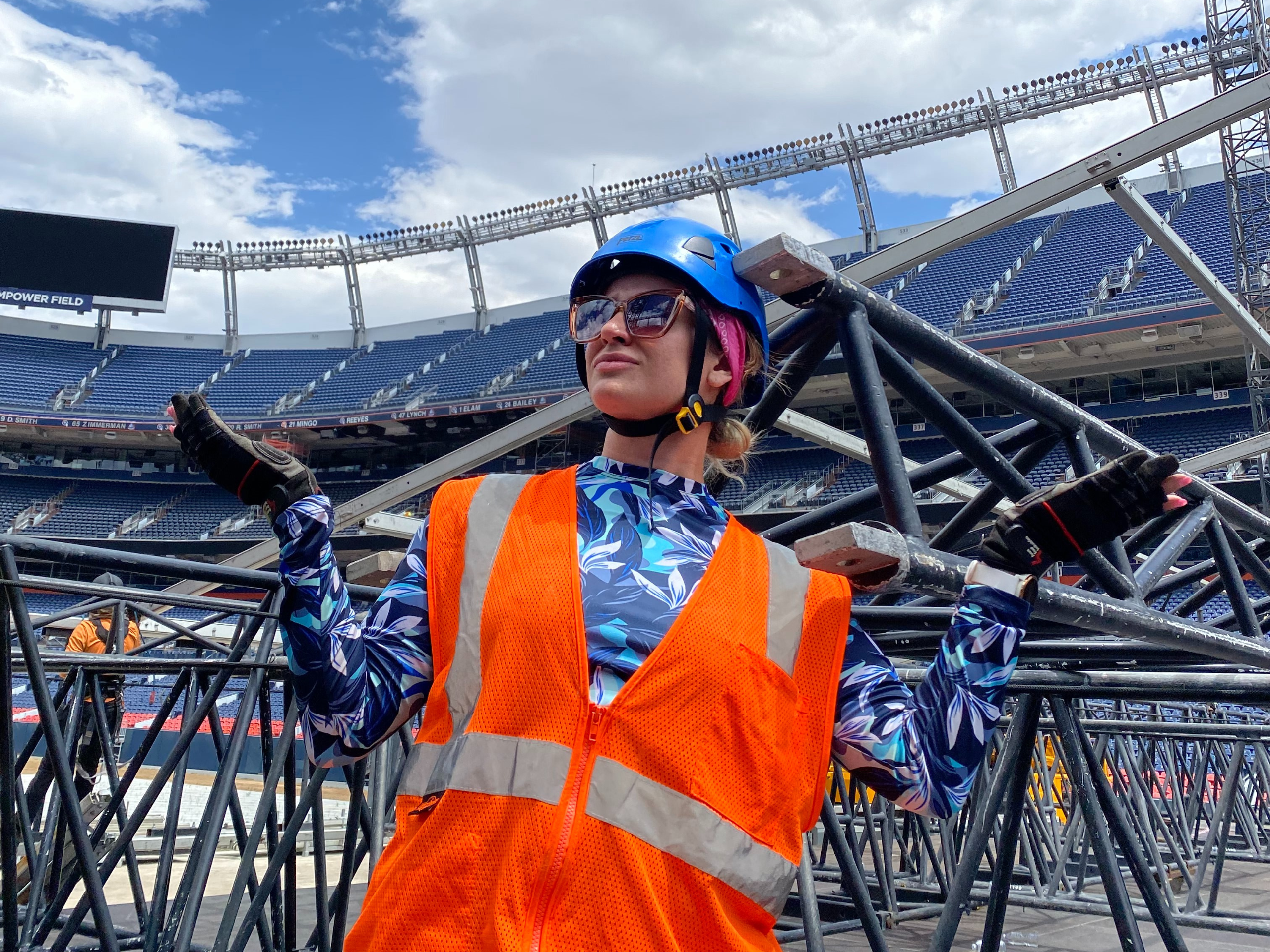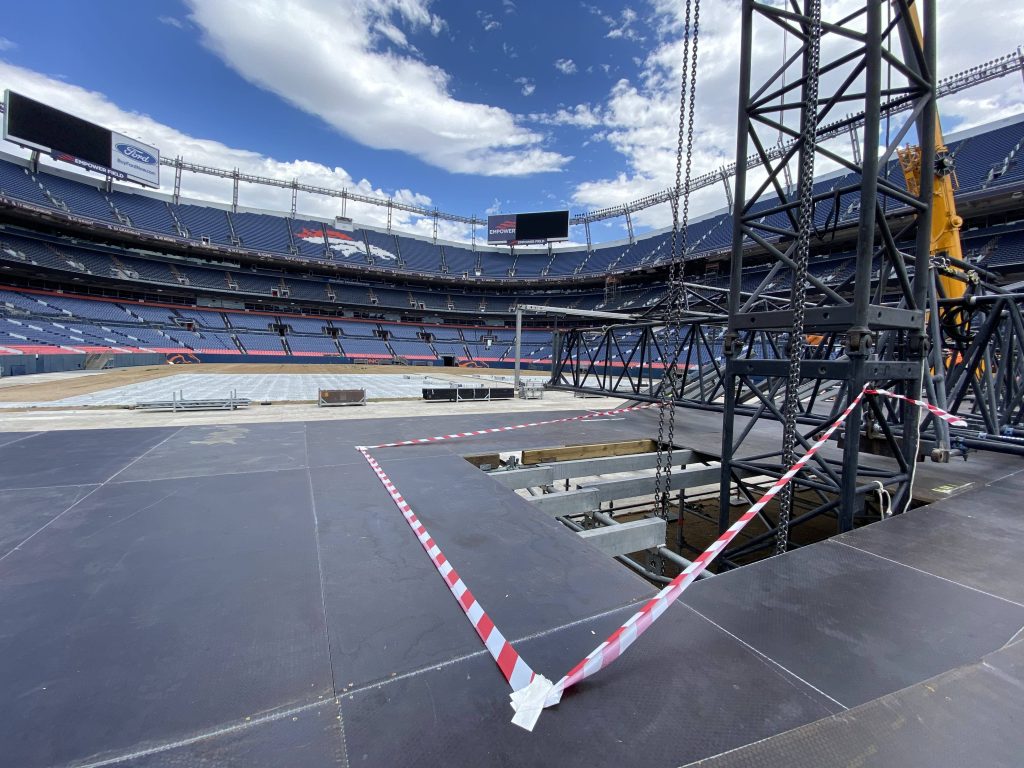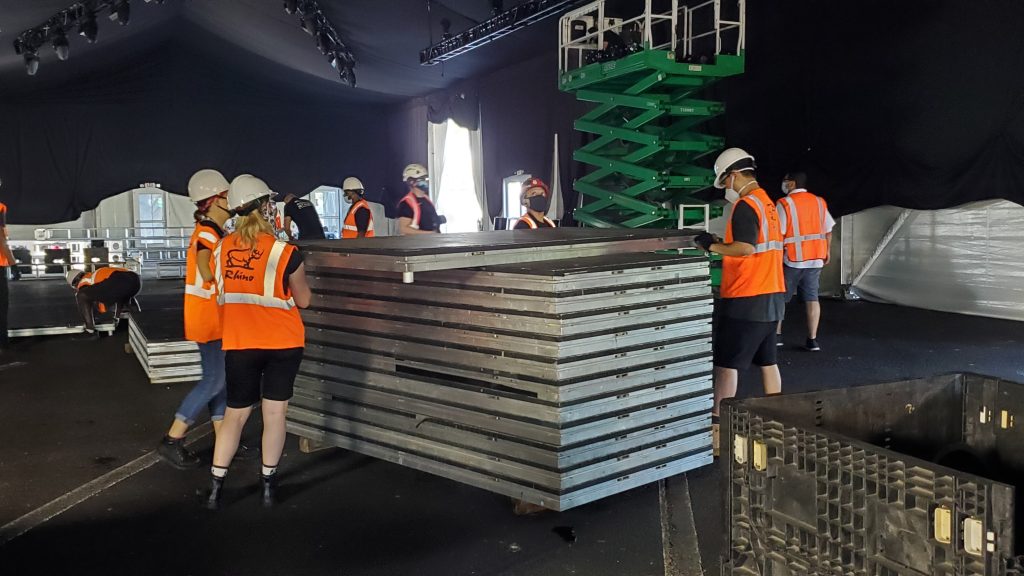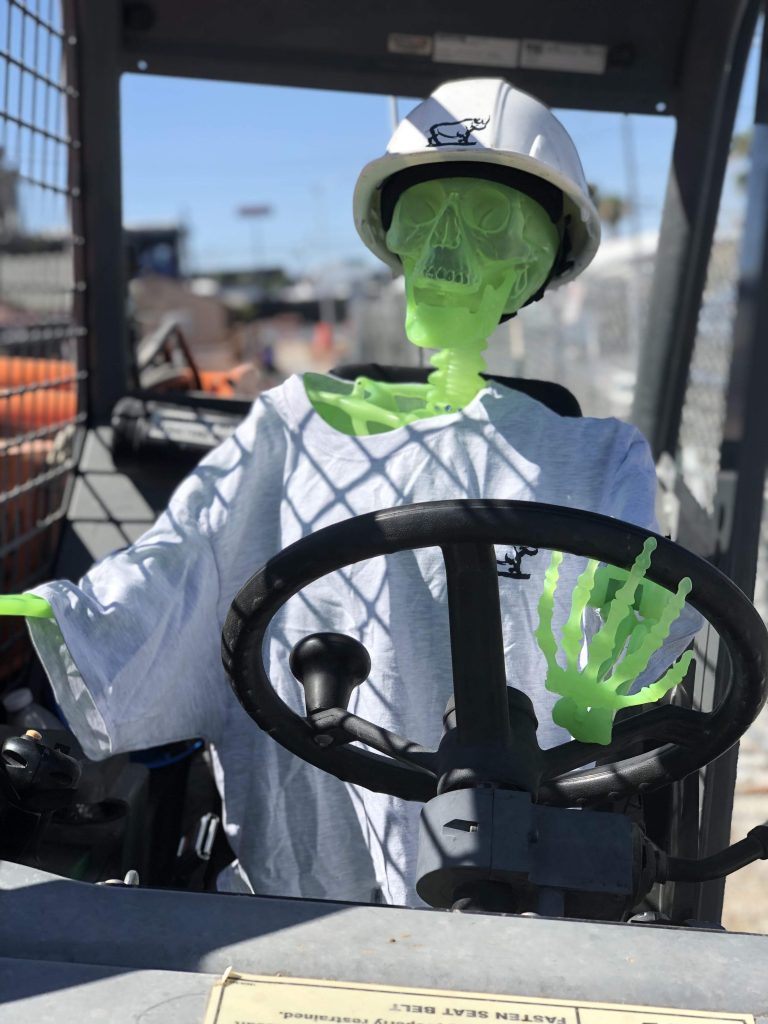

Pay attention, but to what?
Prioritizing your safety is paramount in every production setting! That’s why this blog was written to help equip you with practical tips for enhancing your situational awareness as a stagehand. By incorporating these straightforward strategies into your daily routine, you’ll not only minimize potential hazards but also play a vital role in fostering a safer workspace. Let’s dive in and take your safety to the next level!
Enhancing Visual Awareness

Just as we look both ways before crossing the street, as stagehands we should look in all directions before crossing the stage!
Before moving in any direction, completely check your surroundings:
- UP: Look up to see rigging equipment, suspended loads, scaffolding, and overhead obstacles.
- DOWN: Look down to detect stage edges, holes, uneven surfaces, cables, and potential trip hazards.
- LEFT and RIGHT: Look both ways before crossing any work area to avoid collisions with oncoming vehicles, stagehand traffic, and more.
Also, remember to look behind before driving or walking backward. As a driver or equipment operator, check for people and objects behind you and honk your horn before backing up. As a stagehand, look over your shoulder before and while stepping back to avoid holes, edges, trip hazards, and other stagehands.
Enhancing Aural Awareness

Minimize Distractions
There’s a reason why you turn down the volume when navigating or parking: concentration!
Load-ins and load-outs provide constant sensory input. When we mentally engage in a challenging or entertaining task, we sometimes don’t notice what is going on in the surrounding environment. This is part of why earbuds and in-ear headphones are not permitted. We need to be able to hear background noises such as:
- Engines starting up
- Revving engines (accelerating forklifts or boom lifts)
- Backup beepers
- Short honks
- “Corner!”
- “Behind you!”
- “Yours!”
- Caster wheels rolling on concrete
- Ratchet straps tightening or loosening
- Road cases rolling over an ADA ramp or a change in terrain
- S.T.A.C. chain and shackles making contact with each other
Learn more about Concentration: The Neural Underpinnings of How Cognitive Load Shields Against Distraction.
Listen Up! Team Communication is Key
Verbal communication and active listening foster a safer work environment. Here are tips for team communication:
- Introduce Yourself!
- Share your name with your crew.
- The crew knowing each other promotes better communication.
- Master Stage Directions!
- Be familiar with stage directions.
- Agree on the meaning of terms like rotate, turning, or move the deck hot dog or hamburger style.
- Decide How to Lift & Carry Objects
- Plan the number of people needed for lifting the object.
- Agree on how to grip and lift the object.
- Use appropriate lifting equipment when necessary (e.g. forklifts, chain motors).
- Strategize Object Placement
- Establish safe methods for picking up and setting down objects.
- Consider the best position for safe and easy lifting.
- Coordinate Timing
- Establish clear communication for lifting and setting down objects.
- Determine whether actions will be synchronized with a count or a signal.
- Plan Your Movement Path
- Assign roles for walking backward and forward.
- Identify the clearest paths with minimal obstacles.
- Stay vigilant for obstacles such as cables, ice, or narrow walkways.
- When in Doubt, Just Ask
- Ask for clarification when encountering unfamiliar terminology.
- Ensure a common understanding of tools and equipment.
- Prioritize clear communication to prevent errors and enhance safety.
Last but not least, remember it’s okay to say, “I don’t know,” or “I need a break.”
Take Care of Your Body

Combat Fatigue
We know the fun, yet tiring nature of stagehand work. Check on yourself and take notice of your level of fatigue. The best way to handle fatigue is through prevention: sleep, eat well, and engage in self-care.
When you are doing a load-in or load-out and feel fatigued, PAUSE! Think about what you are doing and how you will do it.
- Volunteer for easier tasks.
- Talk with your team so that they can help.
- Let your lead and crew chief know if you cannot continue with the call.
Combat Complacency
The moment you zone out and go on autopilot is the moment injuries happen. When you feel yourself rushing, cutting corners, distracted, apathetic, zoned out, or too comfortable, PAUSE! Think about what you are doing and how you will do it.
- Practice mindfulness for stagehands
- Refocus your attention on the task at hand.
Avoid Overexertion
Stagehand work is labor-intensive. It sometimes involves working long hours, late nights, or being outdoors. Overexertion is a common hazard. Examples include:
- Doing a heavy lift with a bent back and putting strain on your lower back.
- Having a knee-jerk reaction trying to catch a falling object and spraining your wrist.
- Turning too quickly or jumping out of the way and spraining your ankle.
Did you know that nearly 80% of adults experience low-back pain at some point in their lives?
– National Academy of Sports Medicine
When you are about to begin a task, PAUSE! Think about what you are doing and how you will do it.
- Do dynamic stretches before the activity.
- Use safe lifting techniques.
- Do a partner or team lift and remember good team communication!
- Use mechanical advantage such as a forklift, chain motor, or pulley system.
- Take breaks from repetitive motions.
You Got This!
Enhancing situational awareness is paramount to stagehand safety. By incorporating these tips, we can minimize potential hazards and contribute to a safer work environment. Maintaining visual awareness, actively listening, minimizing distractions, recognizing background noise, communicating as a team, and preplanning are all key elements in enhancing situational awareness. Also, mitigating fatigue, combating complacency, and preventing overexertion play critical roles in ensuring the well-being of stagehands. By prioritizing safety and remaining attentive, stagehands can execute their responsibilities with confidence and contribute to successful productions. Stay safe!